.
14.03.2015
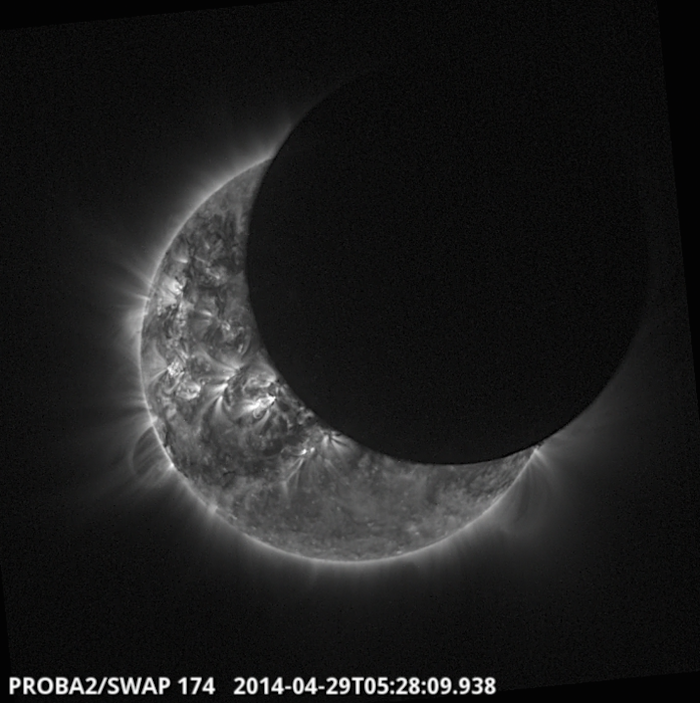
ESA´S MINISATELLITEN BEOBACHTEN SOFI
On Friday morning, 20 March, Europe will experience a partial solar eclipse. Only a partial solar eclipse will be visible from continental Europe, but the Agency’s Sun-watching Proba-2 minisatellite, up in its 820 km-altitude orbit, will see two periods of near-total eclipse for a few dozen seconds.
Meanwhile, other members of ESA’s Proba minisatellite family – each smaller than a cubic metre – will be looking downwards, attempting to capture views of the Moon’s shadow as it crosses Earth.
.
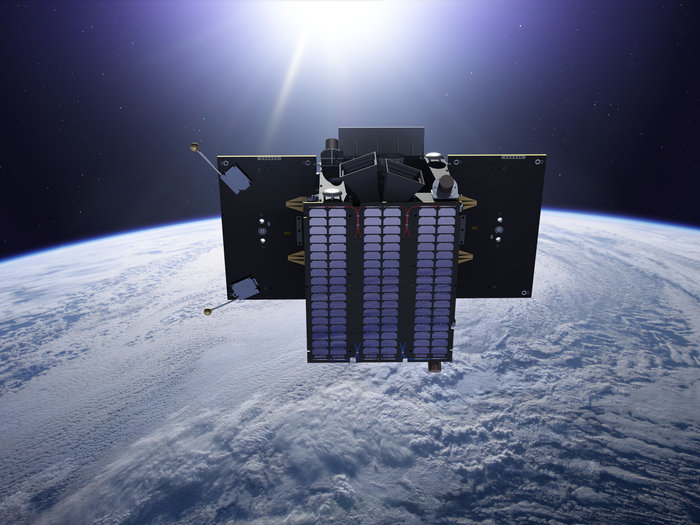
Proba-2
The media and general public are invited to ESA’s technical heart in the Netherlands on the day to experience this spectacular event from both Earth and space. An event is being organised by ESA’s centre and its Space Expo visitor centre in Noordwijk to observe the eclipse safely with telescopes and share views of the Sun, Moon and Earth from orbit.
As observed from Space Expo, the partial solar eclipse will begin at 0930 CET on Friday 20 March, when the edge of the Moon first intrudes into the solar disc, with the maximum four-fifths of the Sun being covered by 10:37 CET and the eclipse concluding at 11:48 CET.
During a solar eclipse the Moon moves in front of the Sun as seen from Earth. As their apparent size is similar, the Moon temporarily blocks a significant part of the Sun’s light.
The whole of Europe will experience a partial solar eclipse this time: 100% of the Sun’s disc will be obscured over Norway’s Svalbard islands, 97% from the north of Scotland, 84% over London, 81% over The Hague, 75% over Paris, 65% over Madrid and 56% over Rome.
The path of ‘totality’ next Friday – where the Sun is completely blocked – will trace a small band across the North Atlantic, including the Faroe Islands and Svalbard, the latter home to an ESA ground station from where eclipse images will be broadcast.

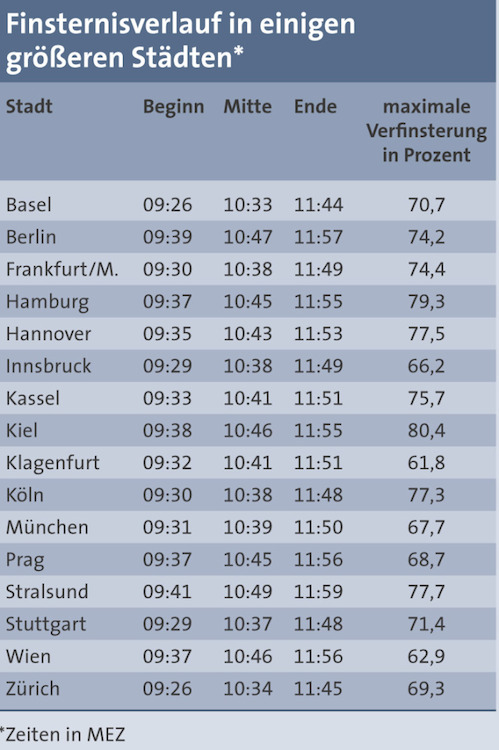
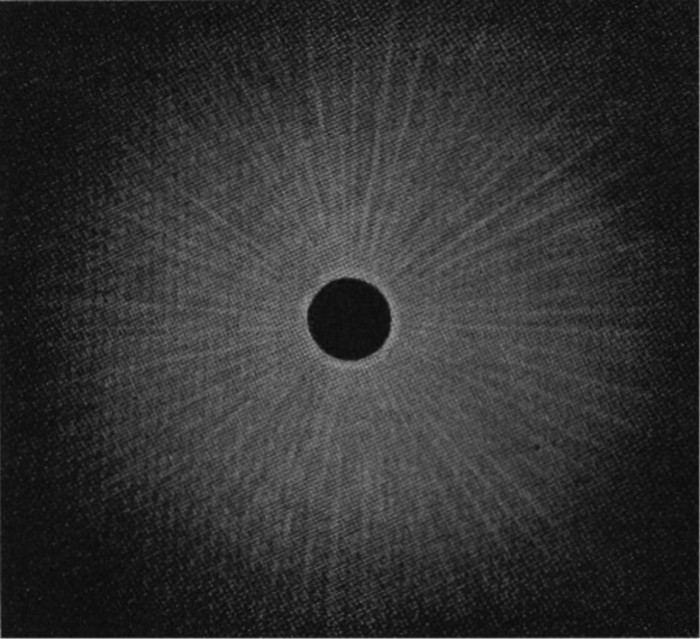
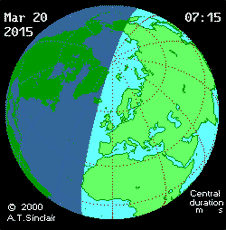
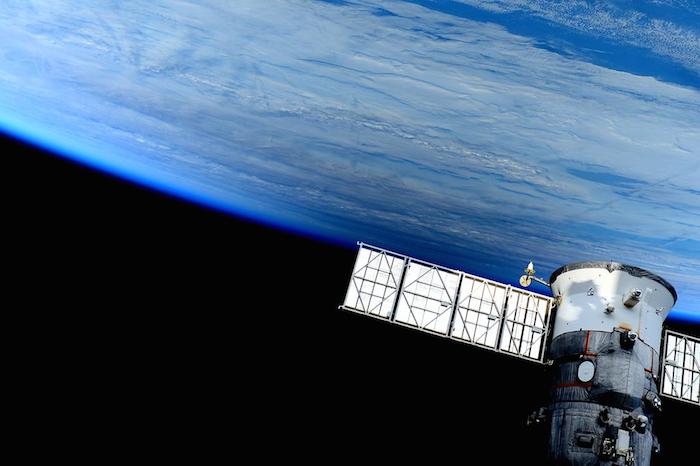
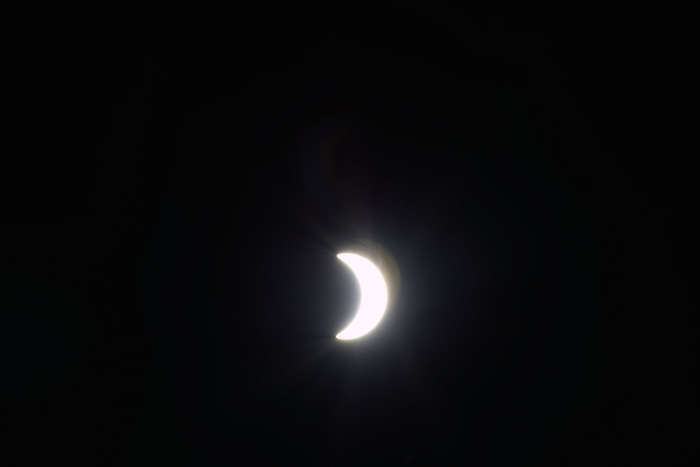
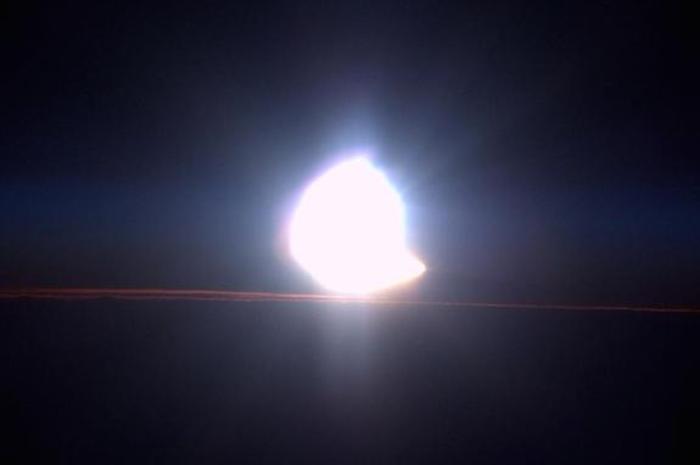
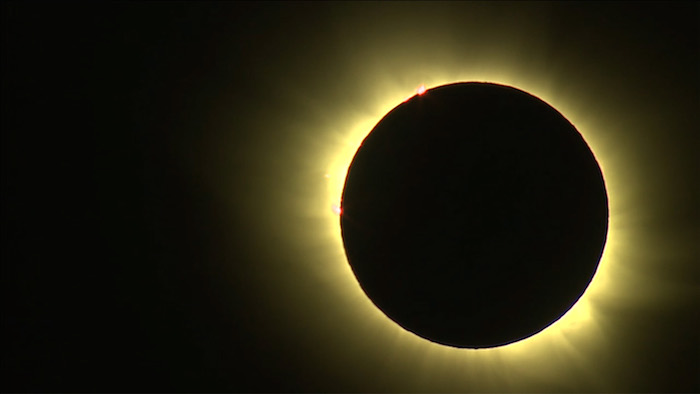
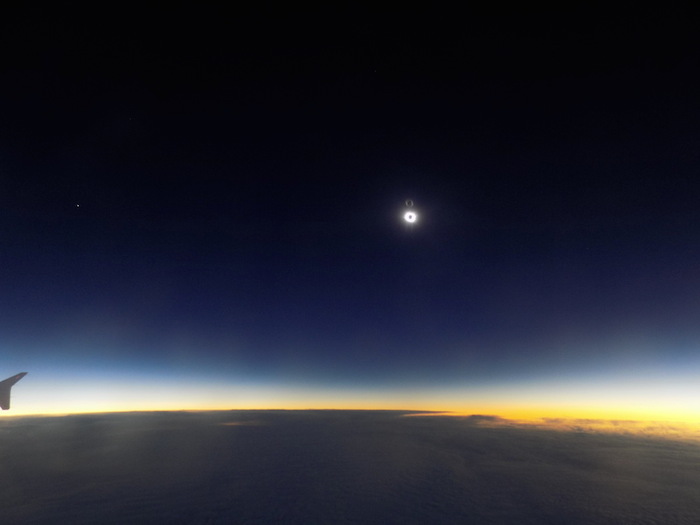
During totality the Sun appears to have a wispy white halo, offering ground observers a rare direct view of its atmosphere or ‘corona’, normally kept out of sight by the intense brightness of the solar disc.
Please take care if you are fortunate enough to be watching this event: observing the Sun with the naked eye is extremely dangerous and can lead to permanent blindness. Please use certified equipment such as solar eclipse glasses, or a solar telescope under expert guidance.
Quelle: ESA
.
Eine partielle Sonnenfinsternis über Mitteleuropa
Über Norddeutschland wird die partielle Sonnenfinsternis vom 20. März 2015 gegen 10:45 Uhr MEZ einen Bedeckungsgrad von rund 80 Prozent erreichen, im Süden sind immerhin noch rund 70 Prozent des Tagesgestirns von der dunklen Scheibe des Neumonds bedeckt. Auf den Färöer-Inseln, auf Spitzbergen und sogar am Nordpol ist die Finsternis für rund zwei Minuten total.
Wer eine Reise auf die Färöer-Inseln oder nach Spitzbergen wagt, der könnte am 20. März 2015 in den Genuss des seltenen Anblicks der Sonnenkorona kommen, denn dort im hohen Norden ist diese Sonnenfinsternis total. Aber wegen des niedrigen Sonnenstands und wolkenreichen Klimas mag man dort auch nur Zeuge einer plötzlich eintretenden, gut zwei Minuten anhaltenden Dunkelheit werden. Wer keine Reise in diese abgelegen Regionen plant, kann die totale Finsternis dennoch live verfolgen. Das Slooh Community Observatory plant, die Finsternis von den Färöer-Inseln zu übertragen.
Partielle Sonnenfinsternis
Am 20. März 2015 wird die Sonne über Norddeutschland zu rund 80 Prozent vom Mond bedeckt, über dem Alpenraum zu gut 65 Prozent.
-

Die totale Sonnenfinsternis vom 20. März 2015
Der Verlauf der totalen Sonnenfinsternis vom 20. März 2015 über der Nordhalbkugel der Erde. Im deutschen Sprachraum beträgt der maximale Grad der Verfinsterung rund 80 Prozent.
Sonnensichel, zackiger Mondrand und Fleckenbedeckungen
Da die Sonne derzeit recht aktiv ist, dürfen wir auf mehrere Fleckengruppen hoffen, darunter vielleicht auch einige kräftige Flecken mit großer Penumbra. So darf mit mehreren Bedeckungen von großen Flecken durch den dunklen, bei genauerem Hinsehen etwas unregelmäßigen Mondrand gerechnet werden. Am besten beobachten Sie dies mit einem gut gegen Streulicht abgeschirmten Projektionsschirm oder einem Objektivsonnenfilter. Okularfilter sind dagegen sehr gefährlich und platzen bei längerer Beobachtung durch die anhaltende Erhitzung im konzentrierten Sonnenlicht.
-

Quelle: Spektrum.de
-
Update: 15.03.2015
.
UK skies set to dim in decade’s deepest solar eclipse
On 20 March a total eclipse of the Sun will take place, visible from the North Atlantic Ocean. Observers in the UK and Ireland will see a partial solar eclipse, with up to 97% of the Sun blocked out. This will be the deepest eclipse in the UK since 1999 and until 2026.Total solar eclipses take place when the Earth, Moon and Sun are almost precisely aligned and the shadow of the Moon touches the surface of the Earth. At mid-eclipse, observers within the lunar shadow briefly see totality, where the silhouette of the Moon completely covers the Sun, revealing the beautiful outer solar atmosphere or corona. Totality is visible this time along a track a few hundred kilometres wide, which only intersects two landmasses, the Faroe Islands midway between Scotland and Iceland, and the arctic archipelago of Svalbard. Observers in those locations will see between two and two-and-a-half minutes of totality.
Away from the path of the total eclipse the Sun is only partly obscured by the Moon. This time the partial eclipse is visible across a large part of the northern hemisphere, including the whole of Europe, Greenland, Newfoundland, northern Africa and western Asia.
In London the partial phase of the eclipse begins at 08:25 GMT. Maximum eclipse is at 09:31 GMT when 85% of the Sun will be blocked. The eclipse ends at 10:41 GMT. Further north in the British Isles, observers enjoy an even better view. From Edinburgh 93% of the Sun will be covered and from Lerwick in the Shetland Isles, the Moon will obscure 97% of the solar disk.
Although eclipses of the Sun are spectacular events, they should NOT be viewed with the unaided eye except during the brief period of totality, which this time will not be visible anywhere in the UK. Despite a large part of the solar disk being covered, looking at the partially eclipsed Sun without appropriate protection can cause serious and permanent damage to the eyes.


The Royal Astronomical Society is backing the stance of Public Health England and the Royal College of Ophthalmologists, who are warning about the risk of eye damage from looking at the Sun. With the Society for Popular Astronomy (SPA), the RAS has produced a booklet on how to safely view the eclipse that suggests a number of ways to project the solar image rather than looking at the Sun directly.
On the morning of 20 March, amateur astronomical societies and public observatories will be running events where members of the public can safely enjoy the eclipse. The RAS and the Baker Street Irregular Astronomers (BSIA) will be running a joint (free) event in Regent’s Park, central London, where members of the public can come and view the eclipse using appropriate equipment at no cost.
Quelle: The Royal Astronomical Society (RAS)
.
Update: 17.03.2015
,


Quelle: SC
.
Update: 19.03.2015
.
Spring Solar Eclipse Visible In Europe on March 20
March 19, 2015
Editor's note: NASA won't have its own live feed of the event, but our friends at Slooh will be webcasting the March 20 solar eclipse live beginning at 4:30 a.m. EDT.
During the morning of March 20, 2015, a total solar eclipse will be visible from the Faroe Islands, located northwest of Scotland, and the Svalbard Islands, located east of Greenland. At the same time, surrounding regions of Europe, northern Africa and northern Asia will be treated to a partial solar eclipse.
.

This sketch by Spanish astronomer José Joaquin de Ferrer, depicts the solar atmosphere, or corona, during a June 16, 1806, total solar eclipse. Before astronomical photography, observers depended on sketches of eclipses to study the sun's corona.
Image Credit: José Joaquin de Ferrer
.
A solar eclipse occurs when the moon passes between Earth and the sun, casting a shadow over Earth. The moon’s shadow masks the solar surface and blocks sunlight from reaching Earth directly – but the amount of sunlight blocked depends on location. For example, on March 20, those in Glasgow, Scotland, will see about 94-percent of the sun blocked by the moon. The unblocked sunlight will appear as a thumbnail sliver. In Paris, the moon will block about three-quarters of the sun at the time of maximum eclipse.
Not only are eclipses an engaging sight, but they also have provided a slew of important science results through the ages. Total solar eclipses block the entire disk of the sun so the faint solar corona, the sun's atmosphere, can be seen. In fact, before the 20th century, eclipses were the only way humans could see the corona.
.

The animated image shows the path of the March 20, 2015 solar eclipse. The blue, half-oval, shadow shows the regions where a partial eclipse will be visible. The thin black line shows the area of total eclipse.
Image Credit: NASA
.
Records of ancient solar eclipse observations date back to around 2,000 B.C. Before astronomical photography, astronomers and talented recorders drew solar details of eclipses. This gave observers only a few minutes to sketch the sun’s corona, before the total eclipse was over – but the results led to tantalizing glimpses of how variable and dynamic that atmosphere was exciting the curiosity of early scientists.
Given the advantages of using solar eclipses to study the solar atmosphere, scientists and engineers in the 20th century built telescopes and spacecraft to mimic their effects. Known as coronagraphs, these kinds of observatories artificially block out the bright light of the sun to reveal the surrounding corona. Today, scientists gather observations from such coronagraphs as the joint European Space Agency and NASA’s Solar and Heliospheric Observatory, or SOHO, as well as NASA's Solar Terrestrial Relations Observatory, or STEREO. For example, these artificial eclipse-makers help us spot and measure giant eruptions on the sun called coronal mass ejections, or CMEs, that hurl solar material out into space.
Solar eclipses have also helped with physics and chemistry research. A total solar eclipse proved Einstein’s theory of general relativity. According to the theory, light from a star should appear to bend as it passes by the edge of the sun. Observations during a total solar eclipse in 1919 – which blocked enough of the sun's light that stars near the sun were visible in the daytime – showed a star’s apparent position in the sky shift due to the sun’s gravitational influence, thus confirming Einstein’s theory.
Additionally, solar eclipse observations led to the discoveries of new and unexpected elements. Spectroscopy measures light emitted, absorbed or scattered by materials. Therefore, examining spectroscopic data can show what materials gave off or blocked incoming light, making it a great tool for exploring materials in distant stars or other planets. Eclipse spectroscopy detected helium in 1868, 25 years before discovery of the element on Earth.
During a solar eclipse in 1879, two scientists independently discovered another new line in the spectrum of the sun’s corona. The data led the scientists to believe they’d discovered a new element. They named the element coronium. Six decades later an astronomer realized coronium lines weren’t unique, but rather they depicted iron at very high temperatures.
"That incredibly hot iron led to an important area of solar science, called the coronal heating problem," said Ryan Milligan a solar scientist at Queen’s University Belfast in Northern Ireland. "The sun's atmosphere is much, much hotter than its surface and scientists are still trying to establish exactly why."
Despite modern technology, eclipses are still vital to observing and understanding the sun. Coronagraphs in space cannot show the inner corona of the sun, locations where scientists believe CME’s are accelerated. These regions are better viewed during a total solar eclipse.
In addition to research, present day eclipses are watched for their interest value. If you're able to see the March 20, 2015, eclipse, remember to never look at the sun with the naked eye, even during an eclipse.
Quelle: NASA
.
Update: 23.03.2015
.
Astronauts Snap Amazing Total Solar Eclipse Photos from Space

This image, taken by Samantha Cristoforetti on the space station may show the shadow of the moon on the Earth during a solar eclipse on March 20, 2015.
Credit: Samantha Cristoforetti Twitter/ESA/NASA
.
Astronauts on the International Space Station caught sight of an amazing solar eclipse today (March 20), and they have the photos to prove it.
European Space Agency astronaut Samantha Cristoforetti took a break from her experiments on the station today to take some great pictures of the total solar eclipse. She may have even gotten a good image of the moon's shadow (called an umbra) on Earth's surface.
"Took a peek out the window between experiments," Cristoforetti said in a series of posts on Twitter. "Orbital sunrise and the #SolarEclipse... could it go any better? … I think this is it: the umbra. Looking aft on our flightpath around maximum obscuration time. #SolarEclipse."NASA's Terry Virts — Cristoforetti's fellow crewmember on the orbiting outpost — also snapped a photo of the solar eclipse just as the sun rose above Earth's horizon.
.

This photo, taken by ESA astronaut Samantha Cristoforetti on the International Space Station, shows a solar eclipse on March 20, 2015.
.
"#Eclipse at 'first light,'" Virts wrote in a couple photo post on Twitter. "You can barely see the corner of the sun that the moon is hiding … There's definitely a piece of the sun missing!"
Only people in certain parts of the world could see the total solar eclipse of March 20 at its best. Skywatchers in Denmark's Faroe Islands and Norway's Svalbard Islands were in the path of totality along with other parts of the North Atlantic. Some intrepid stargazers even chartered flights to be able to see the total eclipse from the air.
Spacecraft in orbit were also able to capture amazing images of the cosmic event. The European Space Agency's Proba-2 caught a stunning video of the solar eclipse from space.
.

NASA astronaut Terry Virts took this image of a solar eclipse on March 20, 2015. The moon appears to take a bite out of the sun as it comes above the horizon.
.
Just as a reminder, it's not a good idea to stare directly at the sun, even during an eclipse. Skywatchers can build a pinhole camera or use special filters for binoculars to observe the eclipse. Eclipse glasses are relatively cheap and can also be used to safely view the sun.
.

The total solar eclipse of 2015 is captured in this spectacular view webcast live by NRK News on March 20 from Norway's Svalbard archipelago in the Arctic Ocean.
.

The total solar eclipse of 2015 shines at its best in this amazing view captured by Space.com skywatching columnist Joe Rao from an eclipse-chasing jet over the North Atlantic Ocean on March 20, 2015.
Quelle: SC
4638 Views
